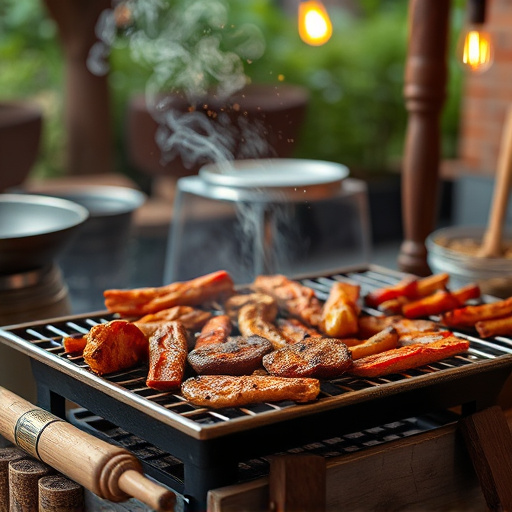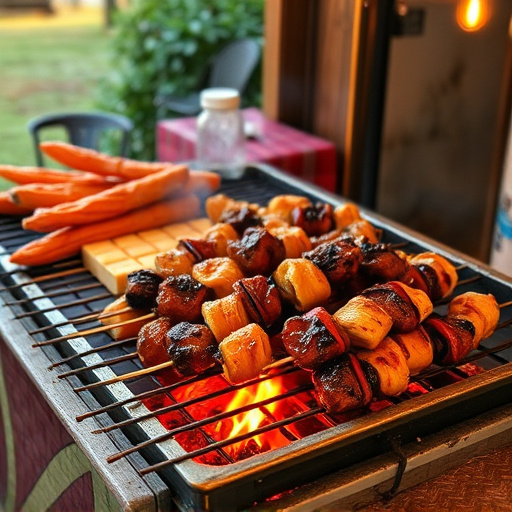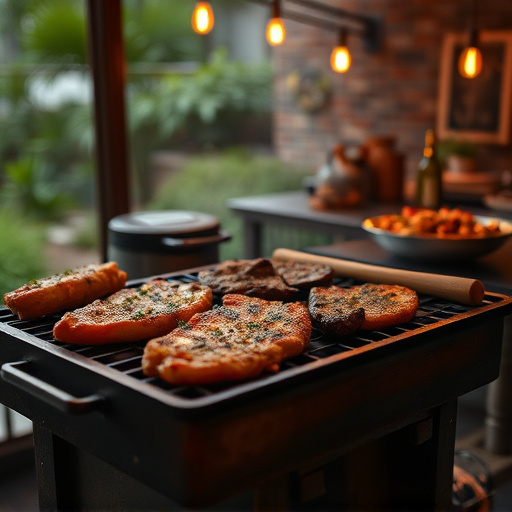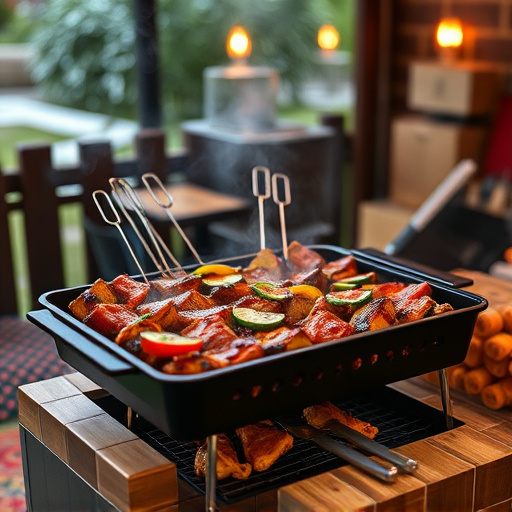Selecting the right cut of BBQ pork ribs, such as pre-trimmed baby back ribs, is key for tender, flavorful results. Understanding rib cuts (baby back, spare rib, St. Louis) and their unique benefits is crucial. Enhance any BBQ pork ribs recipe with a dry rub or marinade before smoking. Baby back ribs offer exceptional tenderness, ease of cooking, and versatility in flavor profiles, ideal for casual gatherings.
Unleash your inner BBQ master with our guide to making restaurant-style pork ribs at home, effortlessly! This comprehensive tutorial takes you on a journey from choosing the perfect cut—baby back or spare—to mastering marination and seasoning techniques that’ll tantalize taste buds. Learn cooking methods that ensure crispy exteriors and succulent interiors. No more waiting for hours; with our simple steps, you’ll be serving up mouthwatering BBQ pork ribs in record time, impressing friends and family alike. Get ready to fire up the grill!
- Choosing the Right Cut for BBQ Pork Ribs
- – Understanding different rib cuts and their suitability for BBQ
- – Advantages of baby back vs. spare ribs
Choosing the Right Cut for BBQ Pork Ribs

When it comes to BBQ pork ribs recipes, selecting the right cut is essential for achieving tender, delicious results. The most common choice is the baby back rib, which features a good balance between meaty bones and soft, edible meat. Look for cuts that have a thin layer of fat cap over the meat; this will help keep the ribs moist during cooking. Avoid rib cuts with too much hard, gristly cartilage, as these can be unpleasantly chewy when served.
For a simple yet mouthwatering BBQ pork ribs recipe, consider starting with a pack of meaty baby back ribs from your local butcher or supermarket. Properly trimmed ribs will ensure even cooking and maximum flavor absorption from the sauce. Pre-trimming the ribs yourself is also an option if you prefer a more precise cut, allowing for complete control over the final product.
– Understanding different rib cuts and their suitability for BBQ

When it comes to BBQ pork ribs recipes, understanding different rib cuts is key to achieving the perfect smoky flavor and tender texture. The most common types include baby back, spare rib, and St. Louis-style ribs. Baby back ribs, with their smaller bone structure and less meat between the bones, are ideal for a quicker cook time and easier handling. Spare ribs, known for their generous amount of meaty rib meat connected to the bone, require a longer cooking process but yield incredibly tender results when slow-cooked to perfection. St. Louis-style ribs, also called “cut in between” or “second cut,” are essentially short spare ribs, offering a balance between cook time and flavor.
Choosing the right rib cut for your BBQ pork ribs recipe depends on personal preference and cooking method. For grill masters aiming for a quicker fix, baby back ribs are a popular choice due to their convenience and ability to retain moisture during cooking. On the other hand, spare ribs and St. Louis-style ribs are preferred by those who have more time for a slower, moist, and intensely flavored dish. Regardless of cut, preparing your ribs with a dry rub or marinade before smoking will enhance the overall taste and ensure a mouthwatering BBQ pork ribs recipe every time.
– Advantages of baby back vs. spare ribs

Baby back ribs and spare ribs are both popular choices for BBQ lovers, but they offer distinct advantages in terms of preparation and taste. One of the key benefits of baby back ribs is their tenderness and ease of cooking. These ribs have less fat marbling than spare ribs, making them melt-in-your-mouth soft when cooked properly. As a result, they are often preferred for those looking for a classic BBQ pork ribs recipe that requires minimal fuss.
Additionally, baby back ribs have a more refined flavor profile due to their smaller size and location on the pig’s spine. This makes them versatile enough to be enjoyed with various sauces, from sweet and tangy to spicy and smoky. Their smaller bones also make them easier to eat, making them suitable for casual gatherings or family dinners, ensuring everyone can savor every tender rib without any mess.
